...
Blog categories
- Sweet recipes (95) click
- Salty recipes (8) click
- Cooking (27) click
- Seasonal recipe ideas (64) click
- Things to know (21) click
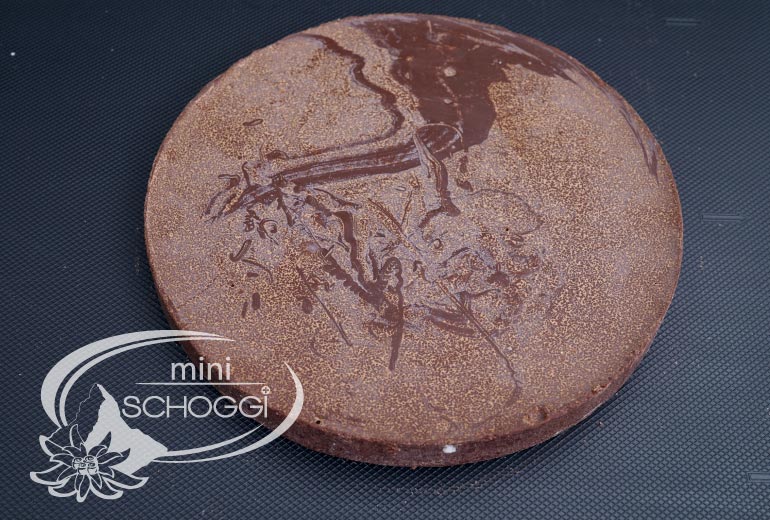
When working with couverture and chocolate, mistakes often happen. Just melt it and you have a great end product, unfortunately it's not that simple. Often the couverture turns grey or gets greyish spots, it is brittle and does not shine. Accordingly, it is very important to be able to assign the defects to the right cause. In order to recognise the reasons for the errors and to be able to avoid them in the future, we have listed here the most common errors when working with chocolate and couverture and also what countermeasures you can take.
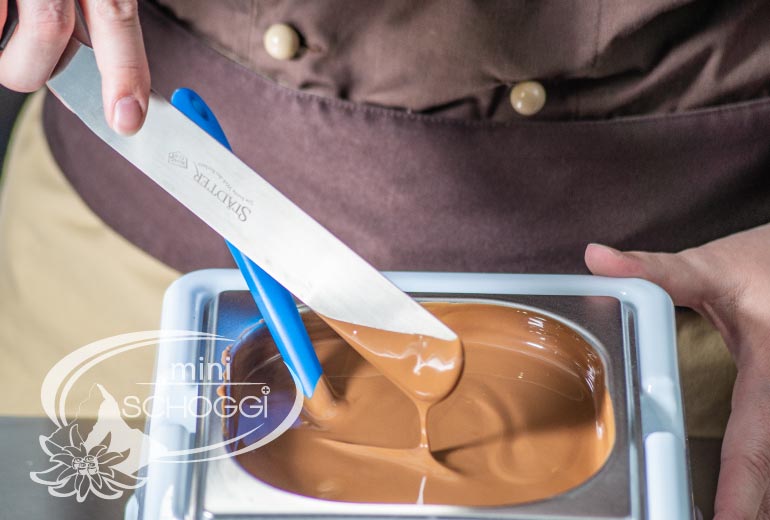
The couverture has still not started to set after 10 minutes at room temperature. It is still very soft and wet.
The couverture has been tempered too warm and therefore has too few stable fat crystals to become solid.
Add another handful of extra crushed couverture pieces to the too warm couverture and stir in carefully so that they can dissolve well and the stable fat crystals are evenly distributed.
The room temperature is more than 24 ºC and is therefore too high. Therefore, the couverture sample cannot put on quickly
Put the couverture sample in the fridge for 5 minutes. After 5 minutes, it should have set nicely. To be sure, press the sample again with your finger. If the sample has only firmed up on the top layer and is still soft on the bottom, the couverture has been tempered too warm.
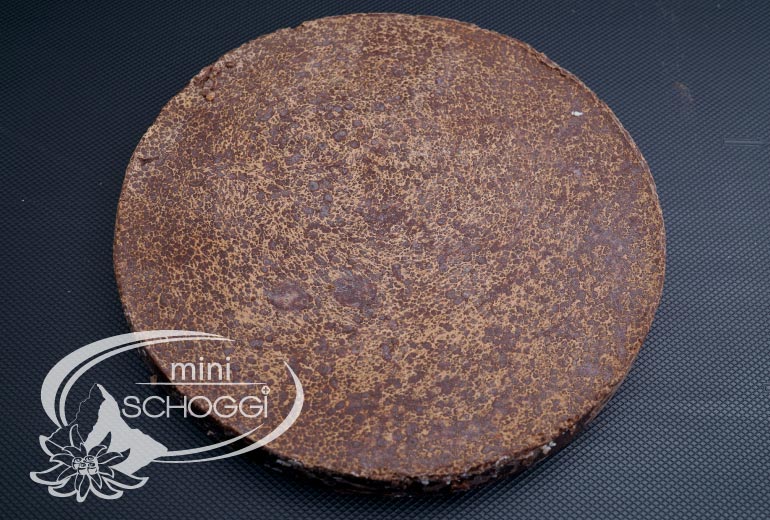
The couverture sets, but only very slowly. After a while, many small grey and white dots appear on the chocolate | couverture.
The temperature of the couverture was too warm. Thus, not all but many stable fat crystal forms in the cocoa butter were destroyed. The stable fat crystals mix with the unstable ones and many grey and white dots are formed
Add another handful of extra crushed couverture pieces to the too warm couverture and stir in carefully so that they can dissolve well and the stable fat crystals are evenly distributed.
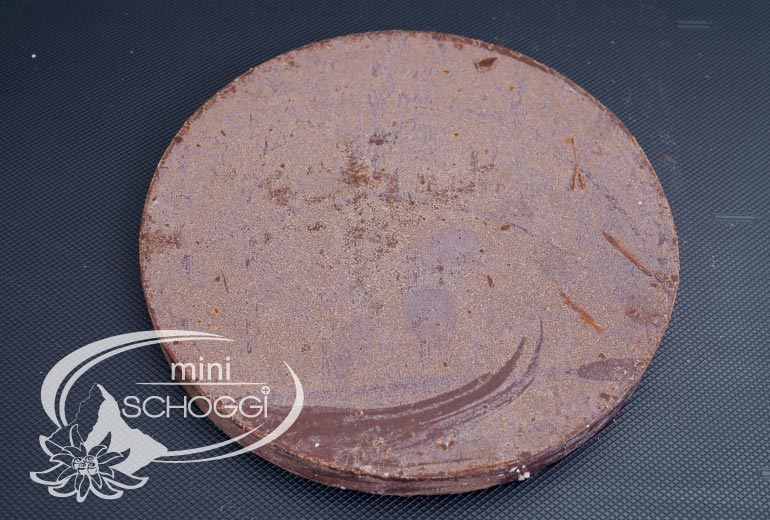
The couverture sets very quickly, but after a while an even grey haze appears on the whole chocolate or couverture.
The couverture contains enough stable fat crystals, but these were processed too cold, turning the sample grey.
Carefully reheat the couverture over a water bath or with a hot air blower until the optimum final temperature has been reached.
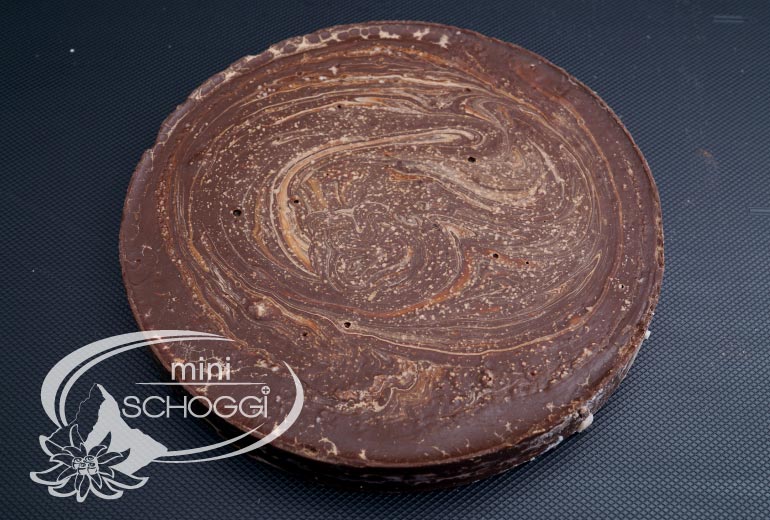
The couverture sets well and retains its colour at the beginning, but when it cools down, grey and white streaks form
If not enough stirring was done during the tempering process, it is possible that there is still warm couverture in the corners of the bowl, for example, which was not mixed with the cold couverture. When the cake cools down, this becomes obvious when streaks appear. Very often this happens towards the end of processing or when the chocolate has been reheated too firmly.
If this happens, the couverture can be tempered again or mixed very well at a suitable temperature. This has no effect on the quality of the chocolate. You can use the couverture for your next creation without any problems.
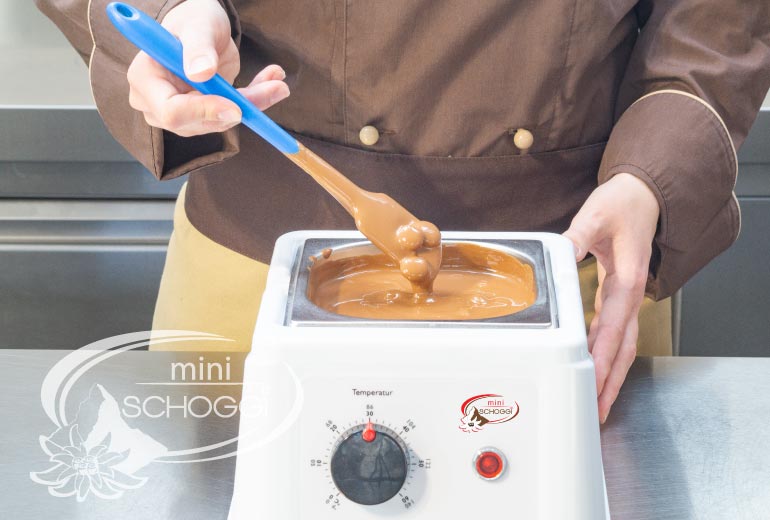
During melting or reheating over the water bath, steam has entered the couverture.
The couverture becomes lumpy or thick and can therefore not be used for the production of pure couverture products. If only small lumps form, you can sieve them off without any problems. However, if a single large lump forms, you can unfortunately no longer undo this and the couverture must be disposed of.
As soon as you notice that water has got into the melted couverture, you must stop stirring immediately. The water should never be stirred into the couverture because, as water is more liquid than the couverture, it floats on the surface and can be easily removed from the couverture with a piece of household paper.
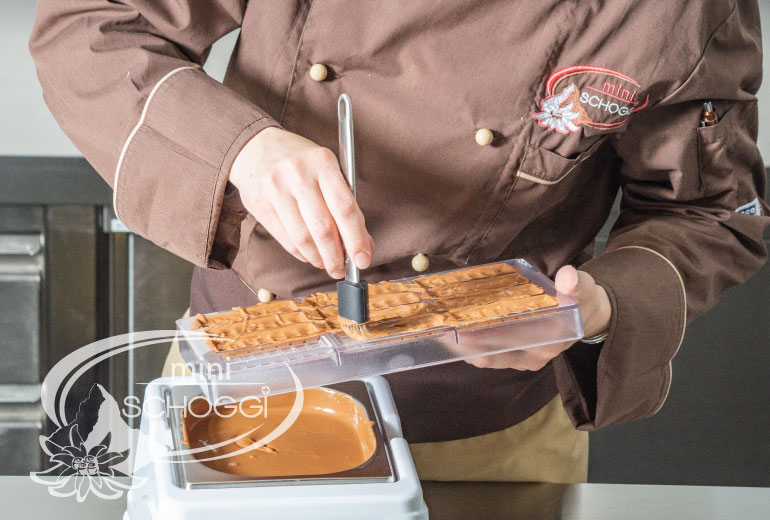
Air bubbles permeate the couverture and if you want to pour it into a mould, the mould must first be tapped on the table for a long time. Instead of a smooth surface, you see small bumps and bubbles.
The couverture was stirred too intensively during the tempering process (possibly with a whisk, which is generally not recommended). Mixing with a hand blender can also lead to air bubbles in the couverture.
Try to stir the couverture gently with a spatula and warm it a little. The gentle stirring and the warm temperature should dissolve the bubbles. For smaller amounts, you can tap the bowl on the table, which will cause the air pockets in the couverture to rise to the surface.
Fat bloom is formed by a change in the crystal form of the fat contained in the product, resulting in a change in gloss on the surface at first and a white to greyish coating as fat progressively accumulates on the surface. Fat bloom is one of the main causes of complaint in the chocolate industry.
There are two main reasons for the appearance of fat bloom. The first cause is also known as "sweating out cocoa butter". The cocoa butter is finely distributed in the chocolate, but is only stable in this form within a certain temperature range. If this temperature is exceeded, the fat slowly migrates to the surface. Incorrect tempering of the chocolate during the manufacturing process or incorrect storage can significantly increase the formation of fat bloom.
The problem can also occur if the chocolate or praline contains fillings with a high fat content (e.g. hazelnuts, nougat, cream fillings or marzipan). The oils and fats migrate from the filling, through the chocolate, to its surface. This is also the reason why such chocolate products are particularly susceptible to fat ripening. Besides the type of filling, the speed of fat migration also depends on the ambient temperature and the type of chocolate.
The small fat crystals melt when heated to 35-36 °C and the coating disappears. However, it forms again during subsequent cooling. The light coating has no influence on smell and taste.
The similar looking sugar rime is mainly caused by storage at high humidity (> 75-80 %). As a result of packaging that is permeable to water vapour, high humidity and/or strong temperature fluctuations, the chocolate products can mist up with moisture. This is particularly the case when they are moved from a very cold storage environment to a very warm and humid environment, resulting in condensation of humidity on the still cold surface. Sugar is dissolved out of the upper layers of the chocolate and, after the water has evaporated, crystallises to form a grey coating on the now rough, lacklustre surface. In contrast to the fat rime, the sugar rime does not disappear immediately when heated to 36 °C. It also feels rougher. It also feels rougher.
Sugar ripeness is harmless to health and does not change the taste. However, it can be accompanied by microbial spoilage because it develops under incorrect storage with the influence of moisture. Mouldiness usually leads to a considerable deterioration in taste due to the enzymatic decomposition of the chocolate.
 Casting your own chocolate Easter bunnies
Casting your own chocolate Easter bunnies
 Make your own decor roulade
Make your own decor roulade
 Correctly temper couverture and chocolate
Correctly temper couverture and chocolate
 Cake Recipes Convert
Cake Recipes Convert
 Casting Father Christmas from chocolate
Casting Father Christmas from chocolate
Leave a comment